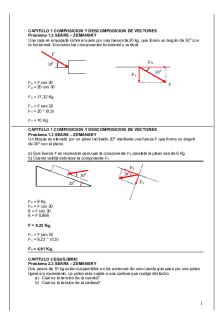Sears - Grade: A PDF

| Title | Sears - Grade: A |
|---|---|
| Author | Shahriar Rabbi |
| Course | Financial statement analysis |
| Institution | Rajshahi University |
| Pages | 9 |
| File Size | 285.9 KB |
| File Type | |
| Total Downloads | 74 |
| Total Views | 134 |
Summary
Strategic Management...
Description
New York (CNN Business)Sears, the once-dominant retail chain that changed how Americans shopped and lived, has filed for bankruptcy. The 132-year-old company has been struggling for several years and is drowning in debt. The final straw was a $134 million debt payment due Monday that it could not afford. Sears Holdings (SHLD), the parent company of Sears and Kmart, is among dozens of prominent retailers to declare bankruptcy in the era of Amazon (AMZN). The filing in federal bankruptcy court in New York came in the early hours of Monday morning. The company issued a statement saying it intends to stay in business, keeping open stores that are profitable, along with the Sears and Kmart websites. As of the filing, about 700 stores remained open and the company employed 68,000 workers. That's down from 1,000 stores with 89,000 employees that it had as recently as February. But Sears said that it's looking for a buyer for a large number of its remaining stores, and it will close at least 142 stores near the end of this year. That's in addition to the 46 store closings already planned for next month. The company did not rule out additional store closings as the bankruptcy process proceeds.
Sears' slow death is a gift to Walmart and Home Depot Eddie Lampert, the company's chairman and largest shareholder, gave up the title of CEO. The company will now be run by three of the company's top executives. For years, Lampert has claimed the company was making progress to end its years of ongoing losses. "While we have made progress, the plan has yet to deliver the results we have desired," Lampert said in a statement Monday. He said the bankruptcy process would allow the company to shed debt and costs and "become a profitable and more competitive retailer." Although retailers typically file for bankruptcy with the intention of staying in business, many end up going bust after filing. In recent years, Toys "R" Us, RadioShack and Sports Authority have followed that path to the graveyard. The upcoming holiday season will be a particular challenge for Sears. It will need to do better than last year. While other traditional retailers enjoyed strong holiday sales, Sears and Kmart both reported sharp drops.
Sears' problems go back decades Sears fell out of shoppers' favor over the past decades as online stores and big box rivals, including Walmart (WMT) and Home Depot (HD), beat Sears on price and convenience.
Sears store in Jackson, Mississippi, 1949. But many of Sears' problems were self-inflicted. Its management tried to compete by closing stores and cutting costs. It slashed spending on advertising and it failed to invest in the upkeep and modernization of its outlets. Sears and Kmart stores grew barren and rundown. Sales declined. Losses piled up in the billions of dollars. Debt mounted, and the company's cash reserves
disappeared. Sears sold many of its most valuable assets, including its massive real estate footprint, to raise the cash it needed to survive. According to the bankruptcy filing, the company was losing about $125,000 a month. It ditched Lands End in 2014. Three years later, Sears dumped the Craftsman brand, which it had sold exclusively. The company has been looking for a buyer for its Kenmore brand of appliances for years. The
only acquirer it could find was Lampert, who offered $400 million for Kenmore through his hedge fund. The Sears board never accepted the offer. By last month, Sears' market value had fallen below $100 million, less than quarter of the value of Kenmore itself. Sears' extraordinary history Sears' history as an American retail pioneer goes back 132 years and includes not just brands such as Sears, Kmart, Kenmore and Craftsman but also Allstate insurance, the Discover card, and Coldwell Banker. But Sears' bankruptcy threatens to end it's run. The retailer's problems have mounted in recent years. Sears warned investors last year there was "substantial doubt" it would be able to stay in business. It has lost $11.7 billion since 2010, its last profitable year. Sales have plunged 60% since then. The company shuttered more than 2,800 stores over the past 13 years. With the writing on the wall that a bankruptcy was imminent, suppliers demanded Sears pay cash up front for the items in its stores, putting it at an even greater competitive disadvantage with other retailers. Whirlpool, (WHR) which had started in business more than a century ago selling its appliances at Sears, pulled its various brands out of Sears and Kmart stores last year. Once the dominant appliance retailer in the country, Sears accounted for only 3% of Whirlpool's sales worldwide in 2017. In September, Lampert proposed that Sears restructure its finances without filing bankruptcy. But he warned that the company was running out of cash. The company's stock quickly fell below $1 a share for the first time in its history. Creditors opted instead to try their hand in bankruptcy court. Without a deal and with $134 million in debt payments due Monday, Sears filed for Chapter 11 bankruptcy protection.
The brand that shaped a nation Sears was once the nation's largest retailer and its largest employer. In its heyday, it was both the Walmart and Amazon of its time.
Beauty department of a sears store, 1955. Formed in 1886 by railroad station agent Richard Sears, the company started as a watch business in North Redwood, Minnesota. Sears moved to Chicago in 1887, and he hired watchmaker Alvah Roebuck as his partner. The first Sears Roebuck catalog, which sold watches and jewelry, was printed in 1896. The Sears catalog was the way many Americans first started to buy mass-produced goods. That was an enormous shift for people who lived on farms and in small towns and made many of the goods they needed on their own, including clothes and furniture. Sears' stores helped reshape America, drawing shoppers away from the traditional Main Street merchants. Sears brought people into malls, contributing to the suburbanization of America in the post-World War II era. Its Kenmore appliances introduced many American homes to labor-saving devices that changed family dynamics. Its Craftsman tools and their lifetime guarantees were a mainstay of middle-class America. Sears truly changed America. But long before the rise of Amazon and online shopping, Sears was struggling to keep up with Americans' changing shopping habits. Big box retailers such as Walmart beat it on both price and merchandise selection. In 1999, it was booted out of the Dow Jones Industrial Average, where it had been for 75 years. Big box rival Home Depot took its place. Sears and Kmart merged to form Sears Holdings in 2005. At the time, they had 3,500 US stores between them. They have fewer than 900 today. In July, Sears closed its last store in Chicago, once its hometown. In August, the company announced another 46 store closings. The company had 89,000 employees as of February. That's down from 317,000
US employees in early 2006, soon after the merger.
What's to blame for the problems at Sears? Amazon? Bad management? CEO and primary shareholder Eddie Lampert has another idea: It's the company's own retirees.
Sears turned in another bleak quarterly earnings report on Thursday, and Lampert complained about the billions of dollars that Sears owes its former employees through pension plans. Lampert said Sears has paid almost $2 billion into pension plans in the past five years, and $4.5 billion since Sears and Kmart merged in 2005 to form Sears Holdings (SHLD). The company pays retirees about $300 million a year, filings show. If Sears could have put that money into operations, "we would have been in a better position to compete with other large retail companies, many of which don't have large pension plans," Lampert wrote in a blog post. He also faulted the "very difficult" environment for retailers, but he said Sears has been "significantly impacted" by pension obligations. Many other analysts have blamed Lampert himself for Sears' misfortunes. They say he made bad decisions about marketing, didn't invest enough in stores and didn't commit to selling online. Americans' increasing preference to buy online, and at big-box stores rather than malls, is a major problem for the company. Sears has lost $11.7 billion since its last profitable year in 2012. Lampert is right that the company is at a disadvantage because it once had traditional pension plans, which pay a fixed monthly benefit to retirees as long as they live. Most businesses today offer what's known as a defined contribution plan, such as a 401(k). Sears ended its pension plans in 2006, but longtime employees and retirees are still entitled to benefits they accrued while the plans were in effect. Sears, once the nation's largest employer, has an estimated 100,000 retirees still eligible for benefits under the pension plans, according to a federal regulator. By comparison, the company had only 89,000 employees as of February, and many of them have since left the company because of store closings. Sears is required to make contributions to pension plans under rules set by the Pension Benefit Guaranty Corp., which provides benefits to retirees whose companies and pension plans go bankrupt. When pension plans are severely underfunded, or when a company is at risk of bankruptcy — both of which are the case for Sears — the PBGC sets stricter rules. For example, Sears is getting about $900 million by selling its Craftsman tool brand to Stanley Black & Decker (SWJ). Under a settlement with the PBGC, Sears must contribute about $250 million of that into its pension plans. Sears is trying to sell its Kenmore appliance brand as well, and Lampert has offered to buy for $400 million through a hedge fund he controls. But no deal has been reached. One reason could be that Sears needs to work out an agreement with the PBCG on how much of the money would go to pensions.
Controversial Sears boss Eddie Lampert might be the company's last hope in bankruptcy What comes next? The fate of Sears and its 68,000 employees may be tied to Lampert's willingness to open his pocketbook once again. He had lent Sears more than $2.4 billion as of June, according to Debtwire, which provides news and analysis of corporate and municipal debt. But other creditors, including banks that provided bankruptcy financing to keep the company afloat in the short term, might not sign on to his plan. "To truly restructure Sears, it would take a lot of capital," said Matt Kopsky, a real-estate investment analyst at Edward Jones. "I just don’t know if creditors are going to be willing to take that risk, and I don’t know if Eddie Lampert can do it alone." Another potential obstacle: The U.S. Trustee, a division of the Justice Department appointed to oversee bankruptcy cases, could play a role as a watchdog in the case. If the Trustee objects to any aspect of the restructuring process, it could thwart Lampert's plans. The Justice Department declined to comment. Sears says that about 400 remaining stores are profitable on their own, though that calculation does not include the company's legacy costs, such as debt payments, or lease concessions the company may obtain. Keeping those 400 stores alive may represent Lampert's best bet. "If there’s a path to come out of bankruptcy, that’s what it’s going to be," Debtwire senior analyst Philip Emma said. It would be a natural extension of Lampert's overarching strategy for the last several years. He long has coveted key Sears real estate. In 2015, he arranged a $2.7 billion deal to transfer 235 of the most valuable Sears store properties to a new real estate investment trust, Seritage Growth Properties, where he is the largest shareholder and chairman. In 2017 alone, Sears paid Seritage $109 million in rent, $43 million in expenses such as property taxes, insurance and utilities, and $35 million in lease termination fees, according to a public filing. The problem for Sears is that bankruptcy can help it shed debt, close unprofitable stores and cut unfavorable contracts. But it won't convince people to shop at Sears. In fact, the risk is that it nudges shoppers to go elsewhere if they're concerned that Sears won't be around to honor gift cards or handle exchanges, for example. "There’s only so much bankruptcy can do to make a company survive in the marketplace, which is where it really has to compete," Jacoby said.
US retail giant Sears files for bankruptcy Sears, the US department store chain that once dominated America's shopping malls, has filed for bankruptcy.
Sears Holdings - which also owns Kmart - filed for Chapter 11 bankruptcy protection on Monday. The company has suffered, along with many other traditional retailers, from rising online competition from firms such as Amazon. Sears has been closing stores and selling properties as it grapples with debts of more than $5bn. The company employs nearly 90,000 people in the US, although that is down from 246,000 five years ago, and in its heyday it had more than 3,000 stores. It became America's largest retailer before being overtaken by Walmart in the 1980s.
Who will the 'retail apocalypse' claim in 2018? What went wrong at Sears?
The firm filed for bankruptcy petition after it reportedly could not meet a $134m repayment due on Monday. Chapter 11 protection postpones a US company's obligations to its creditors, giving it time to reorganise its debts or sell parts of the business. Eddie Lampert - who is the company's chief executive, biggest investor and landlord - had attempted to restructure its debts to avoid bankruptcy. In a statement, he said: "Over the last several years, we have worked hard to transform our business and unlock the value of our assets. "While we have made progress, the plan has yet to deliver the results we have desired." Announcing its bankruptcy filing, Sears also said it would close 142 unprofitable stores by the end of the year, on top of the previously announced closure of 46 stores by November. Entering a Sears in 2018 was like travelling back in time - and not in a good way. Chronic underinvestment in the company's physical stores meant that shelves were often empty and signs for products were handwritten. That's assuming you found a reason to walk into a Sears in the first place. By the mid-1990s most of what Sears sold was available elsewhere, often at a discount. Ironically for a company who rose to prominence with its catalogues and its use of the US Postal Service to deliver nearly everything, everywhere (sound familiar?), the modern-day Sears seemed averse to investing significantly in any e-commerce presence. With some of its best-located stores sold off in a push to raise capital, it eventually became even more difficult to find a Sears - Walmart has over 5,000 locations in the US; Target has over 1,800; even Macy's has over 800 stores. While Sears' closure of another 142 locations certainly marks an end of an era in US retailing, the reality is that Americans still love to shop, even in physical stores, if you give them a reason. They just didn't want to shop at SeaRS
Tarnished' brand Some analysts say Sears' problems were exacerbated by a lack of investment in stores. Neil Saunders of GlobalData Retail said Sears' troubles began in the 1980s when it became "too...
Similar Free PDFs

Sears - Grade: A
- 9 Pages

Case study Sears - Grade: A
- 3 Pages

Caso Sears
- 5 Pages

CASO Sears
- 4 Pages

Sears Tower
- 3 Pages

Fisica-sears-zemansky estática
- 25 Pages

Capitulo 29 Sears
- 42 Pages

Capitulo 1 Sears
- 47 Pages

A child - Grade: A
- 5 Pages

CASO Sears - Práctica
- 2 Pages

Ethics case study sears
- 4 Pages

Unidad 1 (Sears Zemansky Vol2)
- 97 Pages

A Dog\'s Purpose - Grade: A
- 8 Pages

A Good Friend - Grade: A
- 4 Pages

A Beautiful Mind - Grade: A+
- 6 Pages

A Beautiful Mind - Grade: A+
- 10 Pages
Popular Institutions
- Tinajero National High School - Annex
- Politeknik Caltex Riau
- Yokohama City University
- SGT University
- University of Al-Qadisiyah
- Divine Word College of Vigan
- Techniek College Rotterdam
- Universidade de Santiago
- Universiti Teknologi MARA Cawangan Johor Kampus Pasir Gudang
- Poltekkes Kemenkes Yogyakarta
- Baguio City National High School
- Colegio san marcos
- preparatoria uno
- Centro de Bachillerato Tecnológico Industrial y de Servicios No. 107
- Dalian Maritime University
- Quang Trung Secondary School
- Colegio Tecnológico en Informática
- Corporación Regional de Educación Superior
- Grupo CEDVA
- Dar Al Uloom University
- Centro de Estudios Preuniversitarios de la Universidad Nacional de Ingeniería
- 上智大学
- Aakash International School, Nuna Majara
- San Felipe Neri Catholic School
- Kang Chiao International School - New Taipei City
- Misamis Occidental National High School
- Institución Educativa Escuela Normal Juan Ladrilleros
- Kolehiyo ng Pantukan
- Batanes State College
- Instituto Continental
- Sekolah Menengah Kejuruan Kesehatan Kaltara (Tarakan)
- Colegio de La Inmaculada Concepcion - Cebu